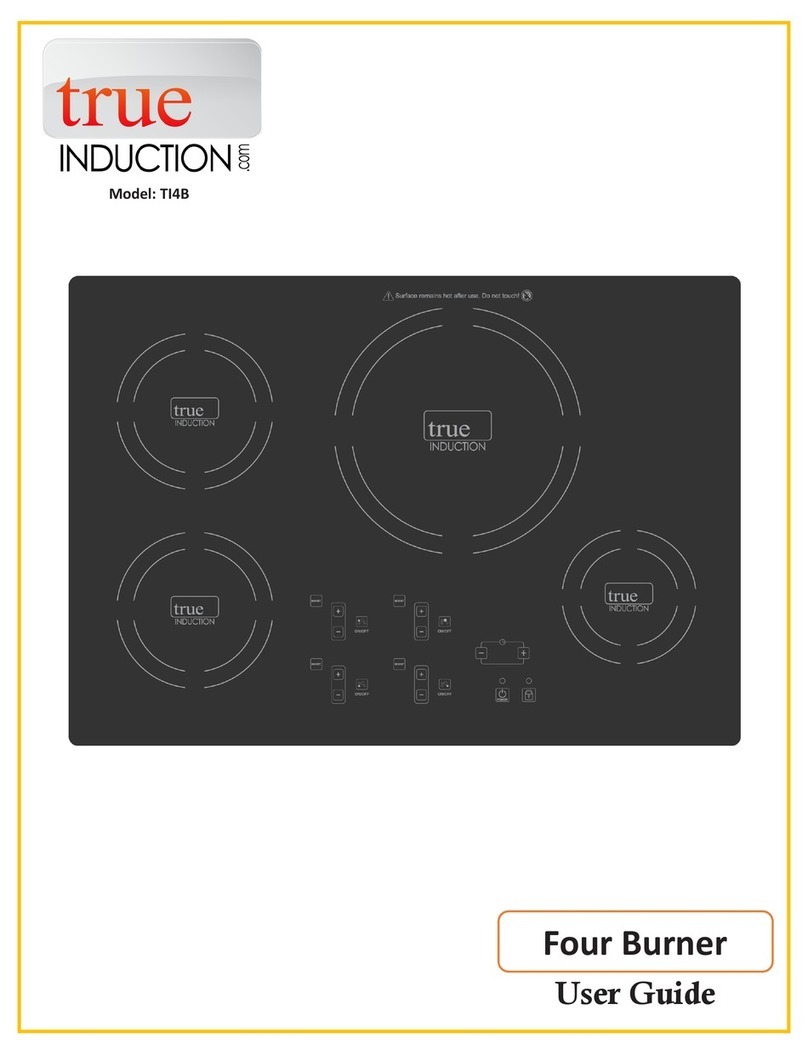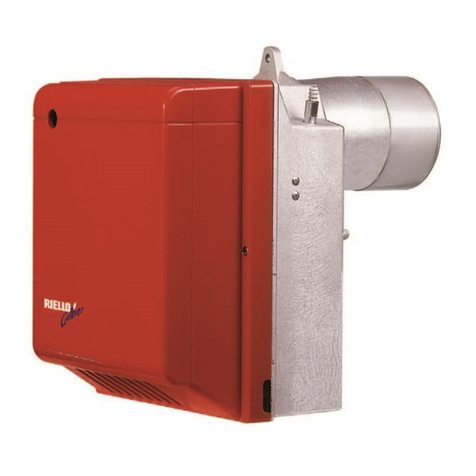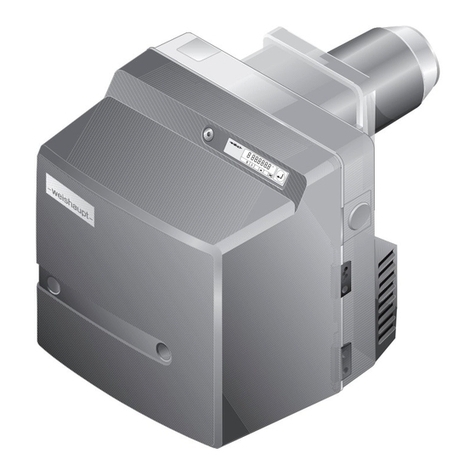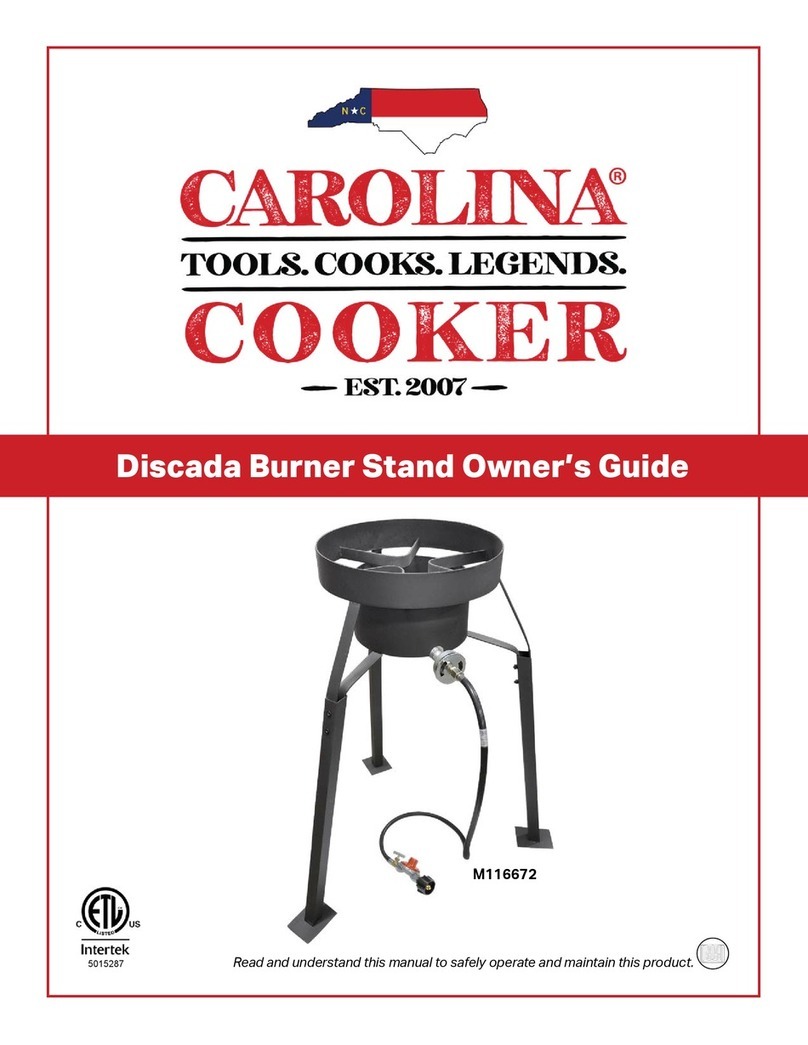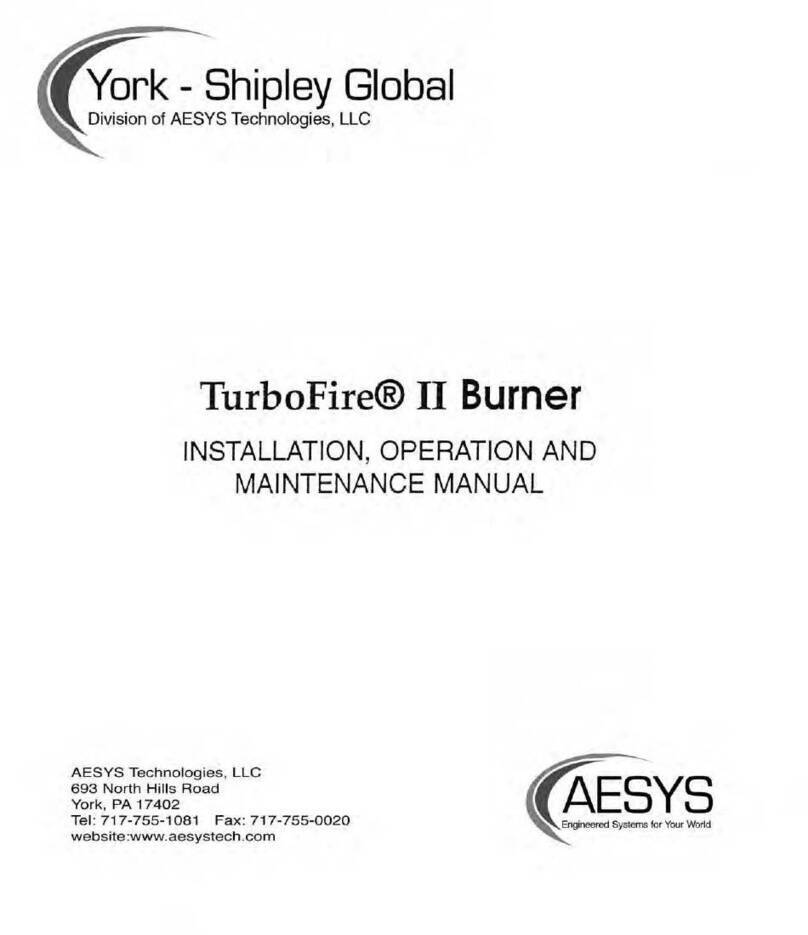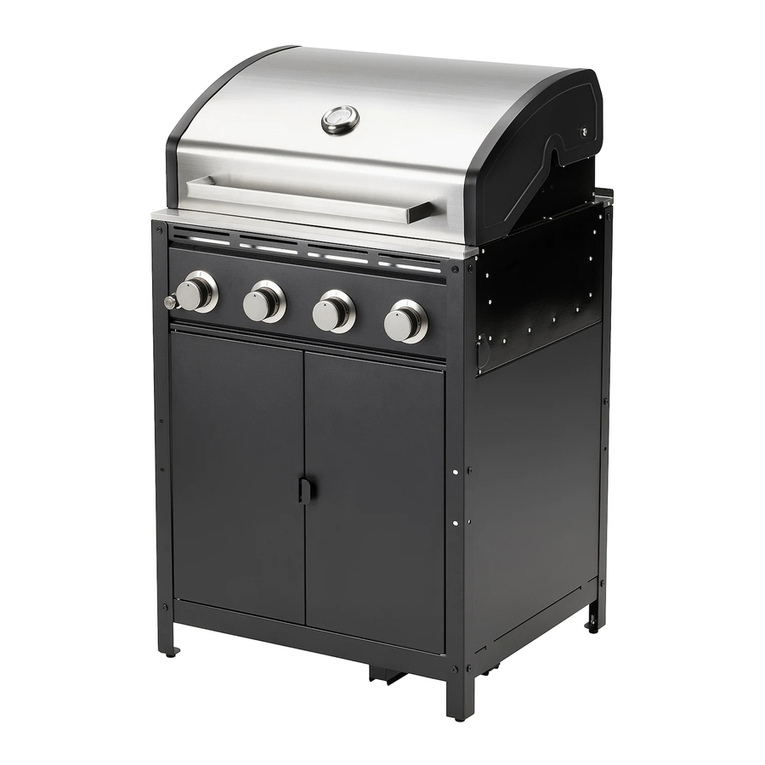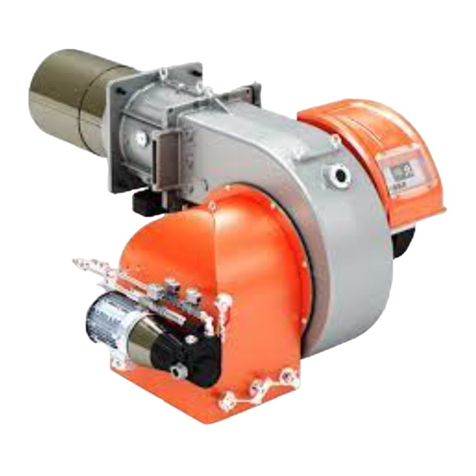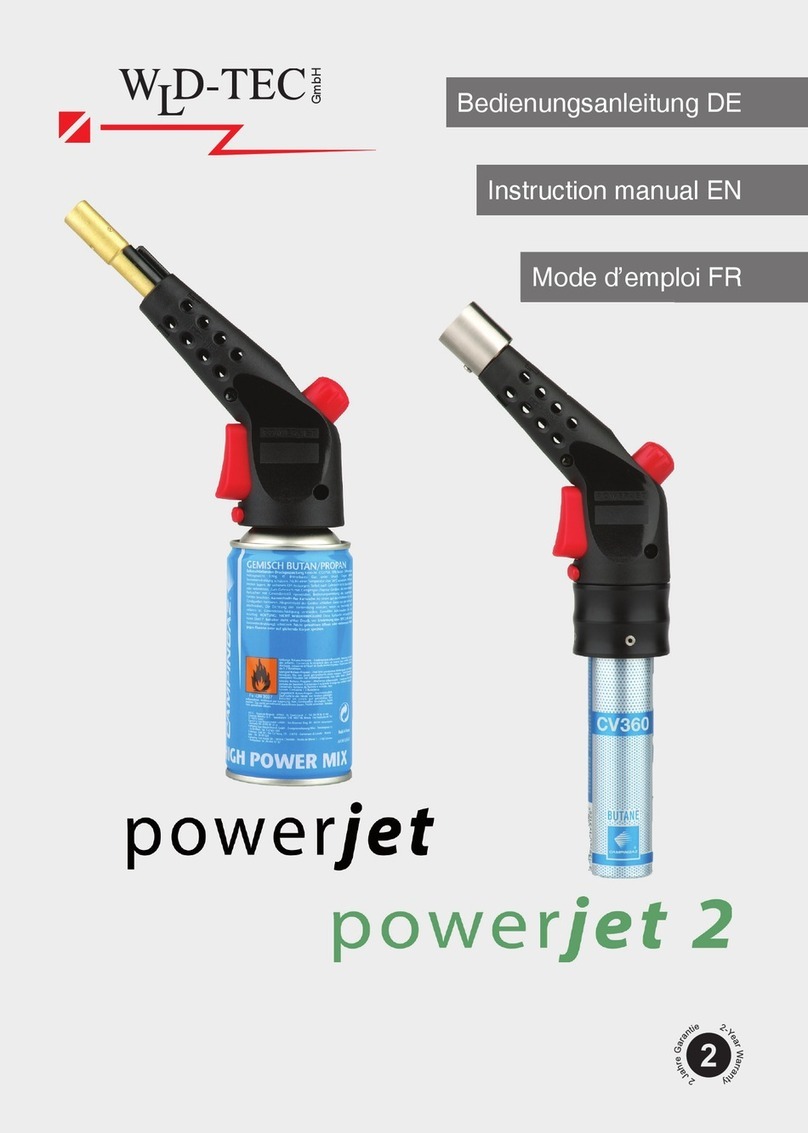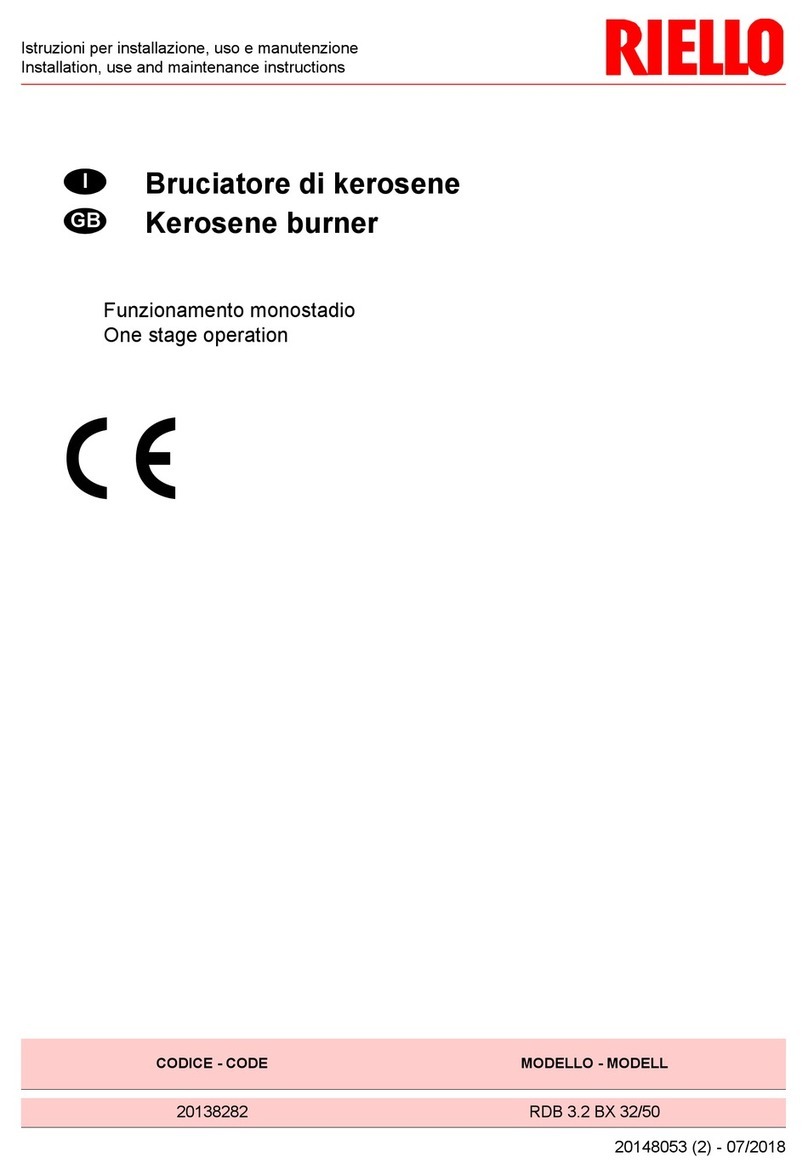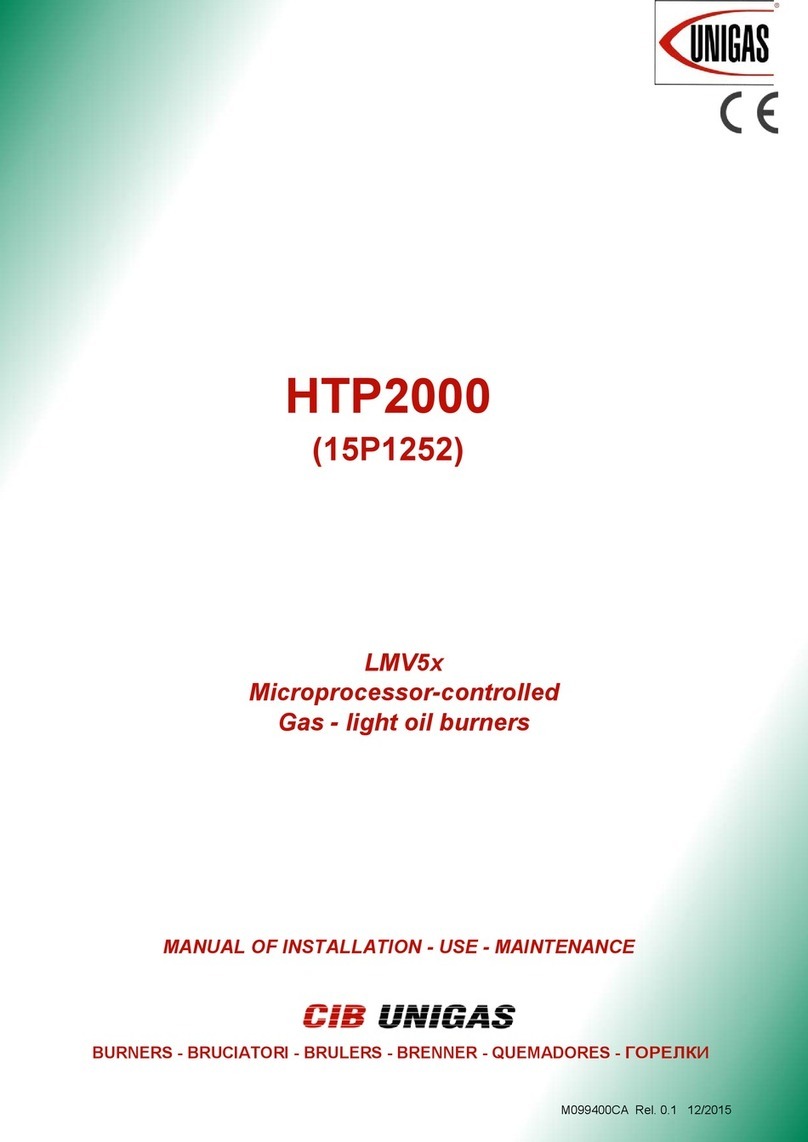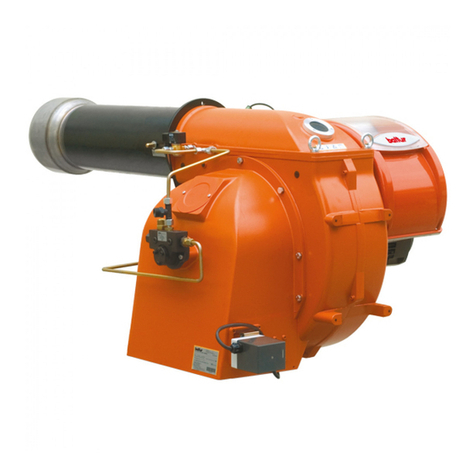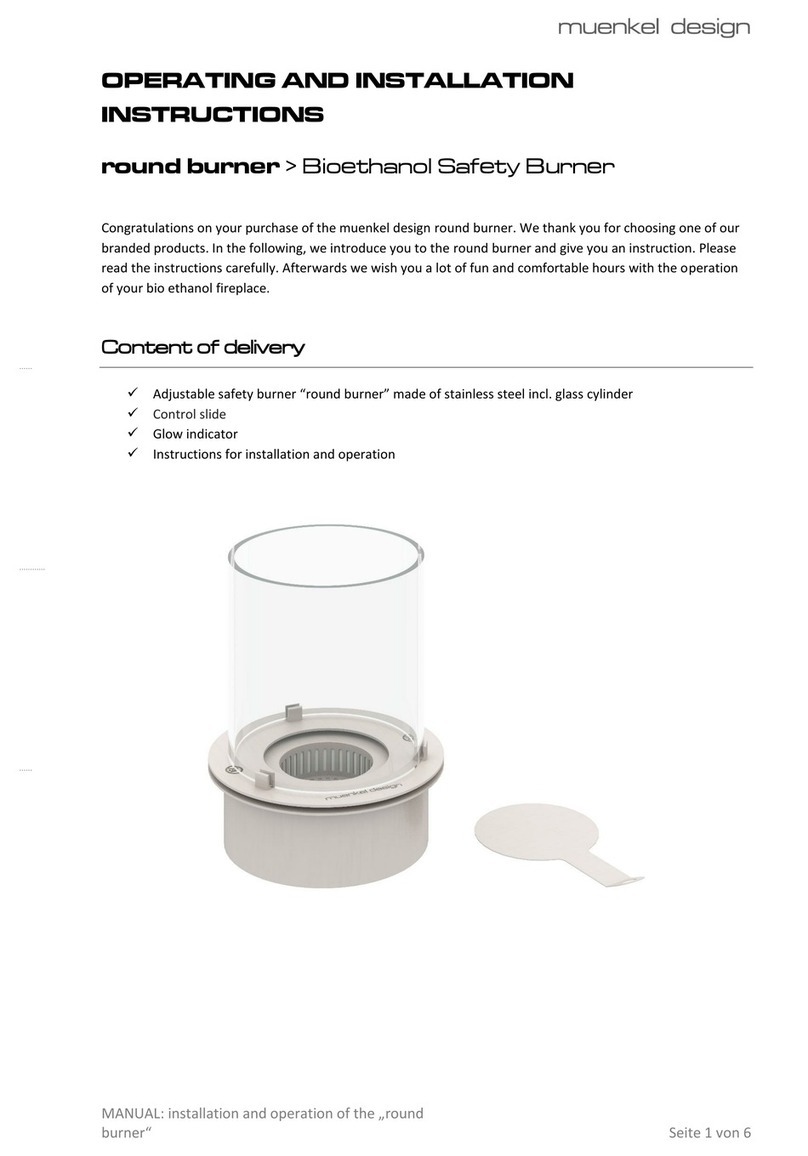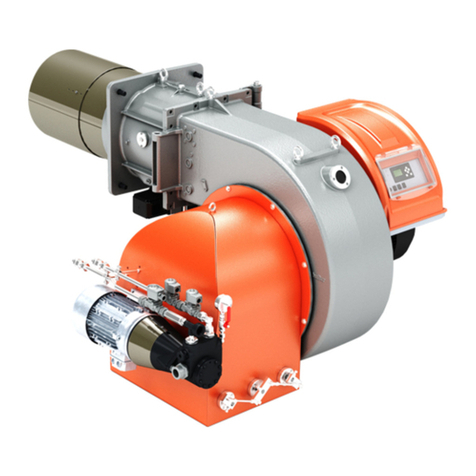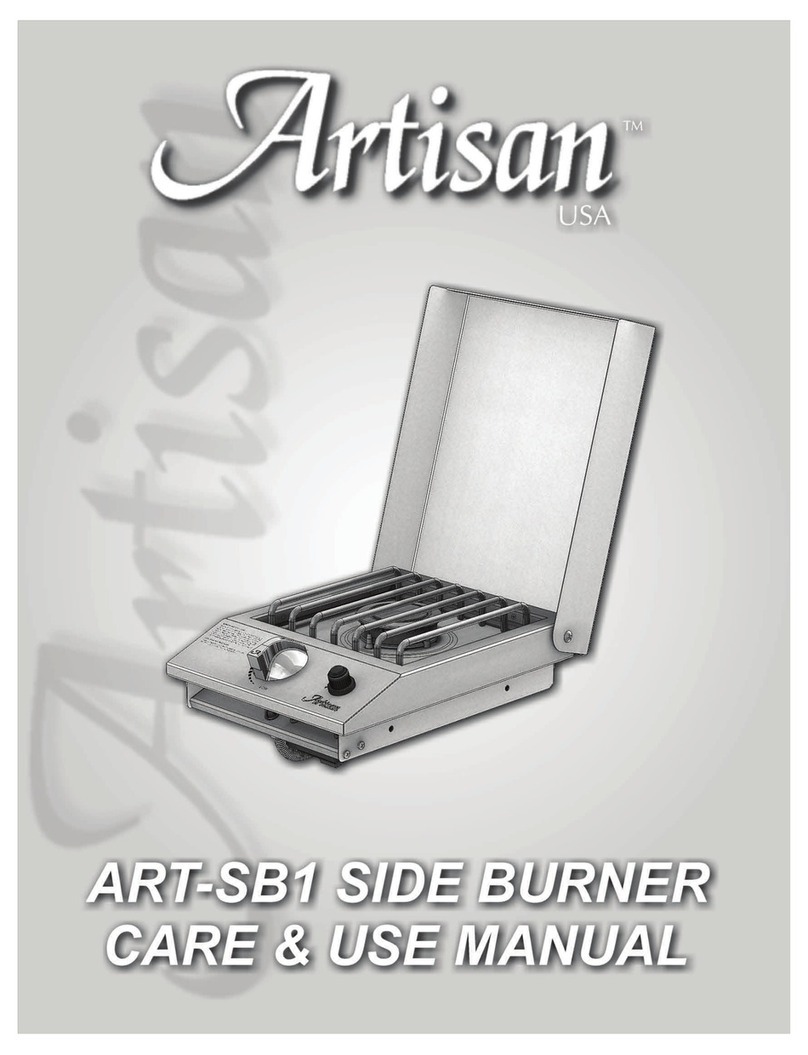10
Please read all instructions before installing or operating your gas
appliance to prevent injury and appliance damage.
• All gas appliances will get hot during use. Use extreme caution when operating the appliance.
• Do not touch hot surfaces. Always use the handle when removing the lid.
• Close supervision is necessary when this or any appliance is used near children. Keep children
away from the appliance during operation and until the appliance has cooled o.
• Do not store any LP cylinder or tank not connected for use with the appliance, in the area of
this appliance or any other appliance. Never store an LP cylinder or tank indoors, or within the
reach of children.
• Never test the appliance for gas leaks using a lighted match or any other open ame; see leak
test procedures using soap/water solutions – see section on Leak Testing.
• The use of accessories, regulators, or components not recommended by the appliance manu-
facturer may cause injuries and will void warranty.
• Never light the appliance without the lid removed and be certain that the burners are posi-
tioned and seated over the gas valves and on the burner support.
• Never lean over the cooking surface when lighting or operating the appliance.
• Use cooking utensils with wood handles and insulated oven mitts when operating the appli-
ance.
• Do not store anything in the appliance. Make sure food is not forgotten in the appliance; for-
gotten items could melt or catch re when the appliance is turned on.
• To prevent injuries, do not use accessories that are not recommended by the manufacturer.
• Before cleaning the appliance, "trip" the circuit breaker and disconnect the transformer.
• Never use the appliance in windy conditions. If located in a consistently windy area
(oceanfront, mountaintop, etc.) a wind break will be required. Wind blowing into or across the
burner, can cause poor performance and / or cause the control panel and knobs to get danger-
ously hot.
• Always remove the appliance lid carefully, using only the handle - the lid may be hot.
• Children should not be left alone or unattended in an area where any appliance is in use. They
should never be allowed to touch, sit or stand on any part of the appliance.
• Do not store items of interest to children in cabinets above the appliance or in the appliance.
Children climbing on the appliance to reach these items could be seriously injured.
• Wear proper clothing when operating this appliance. Loose-tting or hanging garments
should never be worn while using the appliance.
• Do not leave the appliance unattended while in use.
• Do not use water on grease res! A violent steam explosion may result. Instead, smother the
re with a multipurpose ABC extinguisher.












